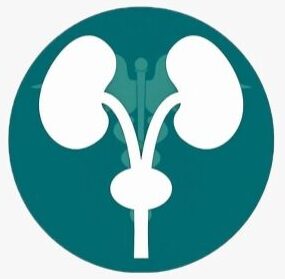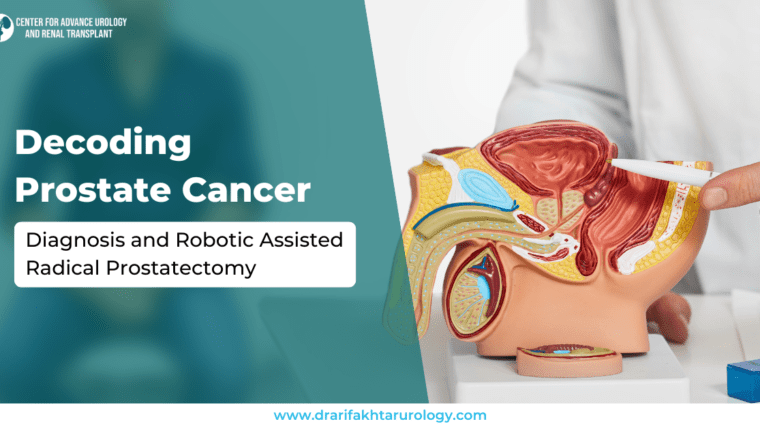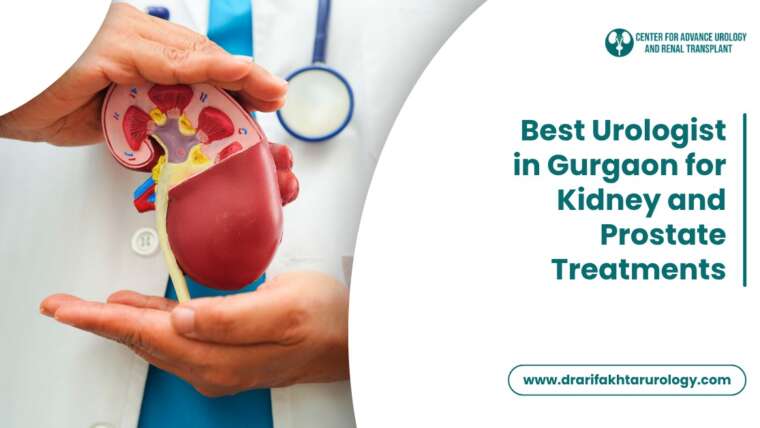Prostate cancer is one of the most common cancers among men, especially those over 50. Early detection is crucial for successful treatment and recovery, as prostate cancer often develops slowly and may not show symptoms in its early stages. Understanding the warning signs, available surgical treatments, and recovery strategies is key to beating the disease and returning to a healthy life.
Early Signs of Prostate Cancer:
Prostate cancer often presents no noticeable symptoms in its initial stages, but as it progresses, you may experience:
- Frequent Urination: Increased urgency to urinate, especially at night (nocturia), can be an early warning sign.
- Difficulty Starting or Stopping Urination: If you find it hard to begin or end urination, this could be a sign that the prostate is affecting the urethra.
- Weak or Interrupted Urine Stream: This occurs when the prostate enlarges and presses on the bladder or urethra.
- Blood in Urine or Semen: Although not always present, blood in urine or semen can be an indicator of prostate cancer.
- Pain or Discomfort in Pelvic Area: Some men experience pain in the lower back, hips, or thighs.
- Erectile Dysfunction: Changes in sexual function may indicate prostate problems, including cancer.
If you experience any of these symptoms, it’s essential to consult a healthcare provider for further evaluation. Early detection through PSA (Prostate-Specific Antigen) testing or a digital rectal exam can improve treatment outcomes.
Surgical Treatments for Prostate Cancer:
Once diagnosed, there are several surgical treatment options available, depending on the cancer’s stage and aggressiveness:
- Radical Prostatectomy: This is the most common surgical procedure for prostate cancer. It involves removing the entire prostate gland and some surrounding tissues. It can be performed as:
1. Open Surgery: Traditional surgery where the prostate is removed through an abdominal incision.
2. Laparoscopic Surgery: Minimally invasive with smaller incisions and faster recovery.
3.Robot-assisted Surgery (Da Vinci Method): Surgeons use robotic arms to perform precise movements with small instruments, leading to shorter recovery times. - Transurethral Resection of the Prostate (TURP): TURP is commonly used for symptom relief in men who may not be ready for a full prostatectomy. It removes part of the prostate to alleviate urinary problems.
- Cryotherapy: This treatment involves freezing and destroying cancer cells within the prostate. It is a less invasive option for certain cases.
Road to Early and Effective Recovery:
Recovering from prostate cancer surgery depends on several factors, including the type of surgery and the patient’s overall health. Here’s a roadmap for effective recovery:
- Post-Surgery Care: After surgery, you may experience urinary incontinence and erectile dysfunction. These are common side effects but often improve with time. Your healthcare provider will offer strategies like pelvic floor exercises (Kegels) to strengthen the bladder and surrounding muscles.
- Follow-up Treatments: Depending on the cancer stage, follow-up treatments like radiation therapy or hormone therapy might be recommended to ensure all cancerous cells are eliminated.
- Regular Monitoring: After treatment, PSA levels should be monitored regularly to check for recurrence. Early intervention is key if PSA levels rise.
- Lifestyle Modifications: Eating a healthy diet, staying active, and maintaining a healthy weight can support your recovery. Consider foods rich in antioxidants, like fruits and vegetables, which may help reduce cancer recurrence.
- Emotional Support: Prostate cancer can have emotional and psychological impacts. Join support groups or talk to a counselor to help cope with stress and emotional health during recovery.
Conclusion:
Prostate cancer, when caught early, has a high rate of successful treatment and recovery. Be proactive about screening, listen to your body for early warning signs, and work with your healthcare team to choose the best surgical and recovery options. A prompt diagnosis and a well-planned treatment strategy can pave the way to a healthier, cancer-free future.




